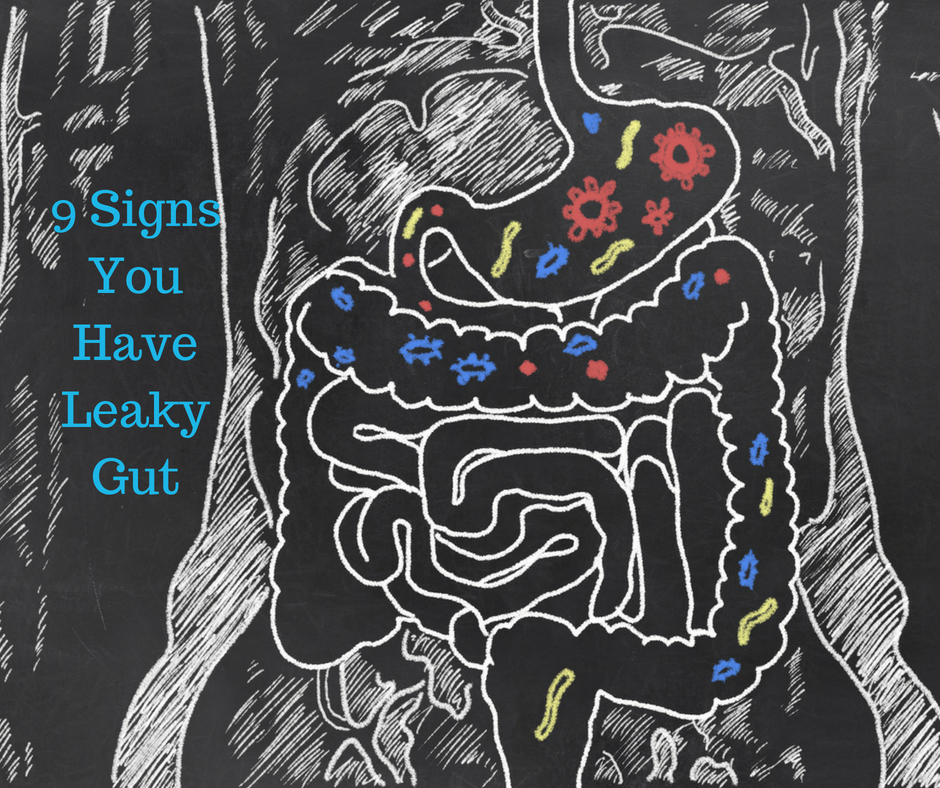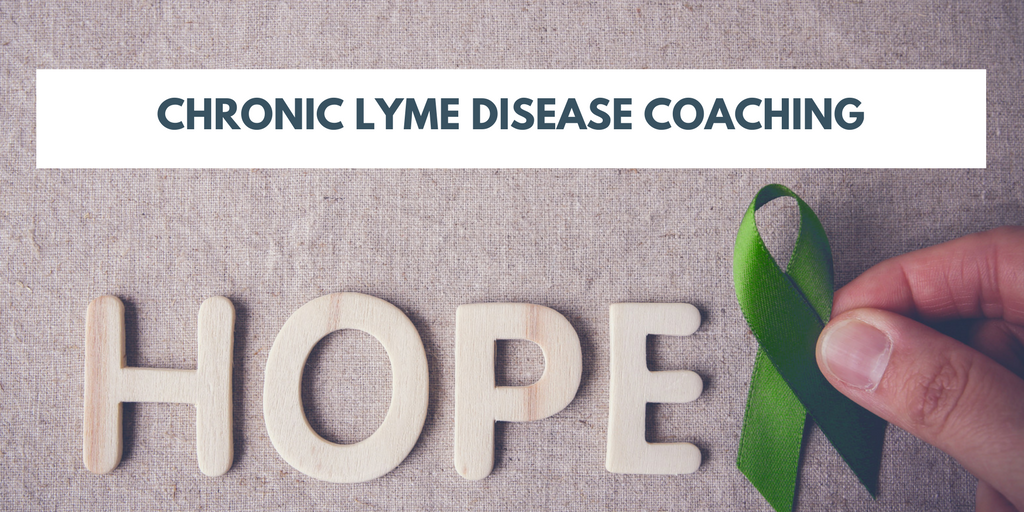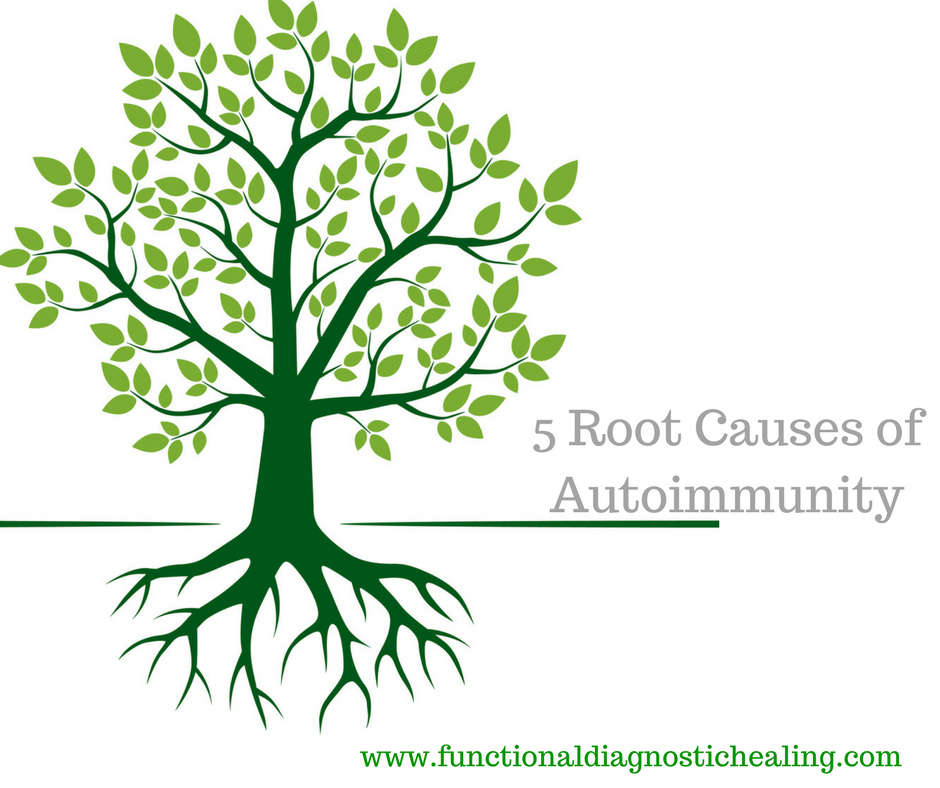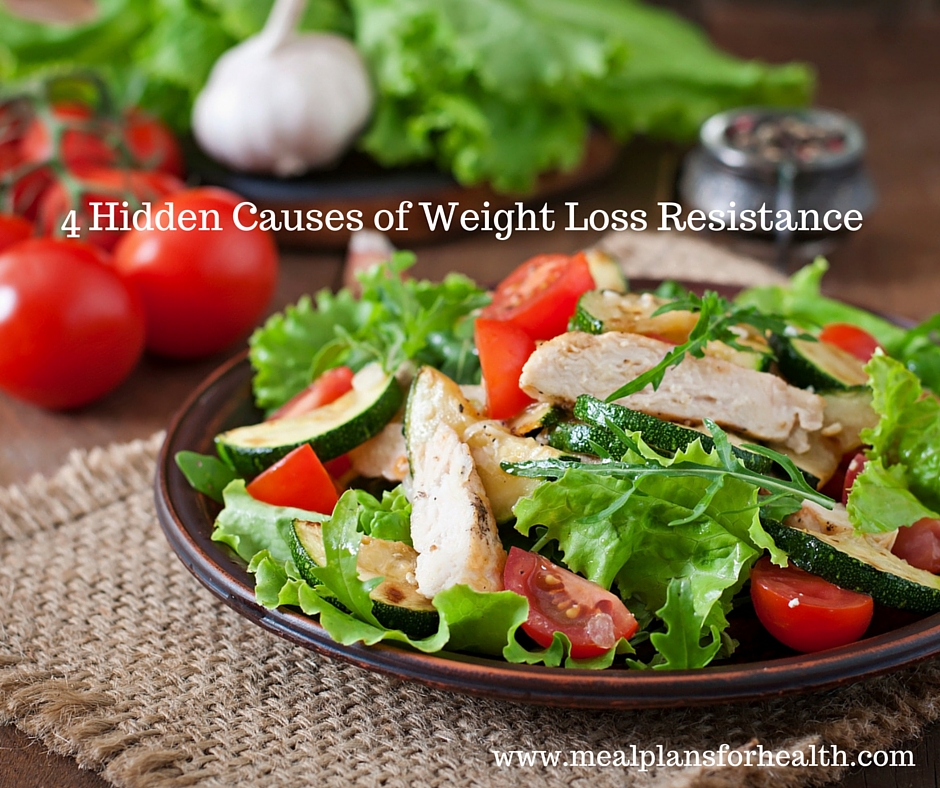|
Hippocrates was quoted saying, " All disease begins in the gut" and today we have mounting evidence showing that many of our modern diseases are in fact rooted in the gut, especially autoimmune diseases, which are affecting more and more people each year. A vast array of chronic inflammatory symptoms ranging from digestive distress, to chronic fatigue, to hormonal imbalances, to joint pain, depression, anxiety, headaches, skin rashes and more are all rooted in the gut.
Studies actually show that over 70% of our immune system resides in the gut and it's also where 80% of our serotonin (the primary neurotransmitter that regulates mood) is manufactured as well. In fact, I've personally experienced how treating the root cause of my leaky gut significantly lowered my depression and balanced my mood! What is Leaky Gut or Intestinal Permeability? The single layer of cells that lines your intestinal track creates a physical barrier between your bloodstream and the outside world. As foods come into your body, they may contain bacteria, viruses, and parasites as well as pesticides. Your gut lining is your first line of defense against these pathogens and toxins. But the lining of your gut can get damaged by inflammatory foods like gluten, toxins like heavy metals and pesticides, pharmaceuticals like antibiotics and NSAID's, as well as pathogenic infections, bacterial imbalances, and stress. A damaged gut lining gets holes in it, for lack of a better term, and you develop what's medically named, intestinal permeability, or "leaky gut". This means that pathogens, toxins, and food proteins can now pass through those "leaks" and into your bloodstream where they interact with your immune cells. The immune system "tags" these food proteins and toxins as "dangerous intruders or pathogens" because they are not supposed to be in the bloodstream and begins to attack them. This immune response leads to the symptoms listed below which is why if you have any of these symptoms, its likely that you have leaky gut. Some experts have estimated that intestinal permeability affects over 70% of our modern population. 9 Signs You Have Leaky Gut:
Leaky Gut - Autoimmunity Connection: When your gut is leaky and more and more particles are able to escape into your bloodstream, your immune system begins to get into a pattern of high alert which causes it to become overstressed and fire less accurately, sometimes leading to an attack on your own body's tissues or an autoimmune attack. Eventually, this will develop into full-blown autoimmunity if your gut is not repaired. In addition, your immune system starts making antibodies against the substances that have escaped into your bloodstream. Many of these foreign invaders, especially gluten and dairy, in particular–look very similar to your own body’s cells, causing your immune system to get confused and accidentally attack your tissues. This process of mistaken identity is called molecular mimicry, and is another way that leaky gut can trigger autoimmune disease. Healing Leaky Gut: If you want to reverse autoimmunity and heal your gut, I suggest working with a skilled functional medicine practitioner who can help you identify all the root causes of your symptoms and take you step by step through a personalized gut healing protocol. You and your practitioner will need to identify and remove all the inflammatory dietary and lifestyle items that are contributing to your intestinal permeability like food sensitivities, toxic exposures, and stress. You will also need to identify and treat pathogenic infections in the gut, reinoculate your immune system with beneficial bacteria, and lastly provide your gut with the key nutrients it needs to repair the "leaks and holes" in the lining. In my practice, I find that 80% or more of my clients have leaky gut at the root of their chronic symptoms. When we focus our approach towards healing the gut by eliminating inflammatory triggers, rebalancing the gut microbiome, and repairing the intestinal lining, people begin to heal, get rid of chronic symptoms, and get their life back! Are you ready to get rid of your chronic symptoms? If so, I'd love to help you! If you want to learn more about what to expect when working with me- you can schedule a complimentary 15 minute new client session to understand how my root cause approach can help you reclaim your health! Or check out the gut healing programs I offer on my Work with Me page and read testimonials of others who have worked with me. In good health, Billie
0 Comments
Did you know there are 70-80 million people in the U.S. alone that are suffering with an autoimmune disease and up to 150 million people worldwide? These numbers have increased threefold over the last 50 years and are continuing to rise.
What is Autoimmunity? Autoimmune disease is a whole spectrum of illnesses that all have common root causes, even when they show up in different parts of the body. The commonality among these illnesses is that the body is attacking its own tissues. This can happen when our immune system no longer recognizes our own cells as safe, it identifies them as harmful intruders and launches an attack against them. There are many things that can change the shape and appearance of your cells which is what's at the root cause of these chronic illnesses. The traditional western medicine approach to these illnesses to prescribe steroids and other immunosuppressant drugs to reduce the immune system's response. They are focused on "diagnosing" your illness and then "treating" you with pharmaceuticals to reduce symptoms. These drugs to do not to anything to cure or reverse your illness or help you heal, they are simply "masking" the symptoms of your illness at best. And they come with horrible side affects like a insomnia, depression, and immune deficiency making you more likely to get infections that will only make you sicker. As someone who was diagnosed with 3 different autoimmune conditions by 3 different specialists, I understand just how frustrating and hopeless it is be given a diagnosis(s) without any answers as to the known cause. That's why I became a Functional Diagnostic Nutrition Practitioner so that I could figure out my own answers, reverse my illness, and help others do the same. In Functional Medicine, our approach is to ask the questions, "why are you sick?", "why did you develop this set of symptoms or this illness?", "what is at the root cause of this illness?". What we find when we ask these questions is that regardless of the type of symptoms that are being expressed or the type of autoimmune disease that has been diagnosed, there are common things that we find at the root cause of every autoimmune condition. 5 Root Causes of Autoimmunity:
The good news is that once you know the underlying cause(s) of your condition, you can truly support your immune's system ability to heal itself. In my practice I use special functional lab work to identify what's at the root cause of your autoimmune condition and then design a personalized dietary, nutrient replenishment, and lifestyle protocol to help lower inflammation and slow or reverse autoimmunity. So if you are sick of being sick and tired of not having answers as to the development of your condition, check out my approach and read about what it's like to work with me,. If you like what you see, consider a 15 minute free consultation to learn how to identify the underlying causes of your autoimmune condition and get rid of chronic symptoms that dominate your daily life! This common hormonal imbalance affects both women and men and can leave you feeling blue, overweight, and unable to sleep. Estrogen dominance occurs when estrogen levels are too high relative to other hormones, especially progesterone. This can occur in the presence of excess estrogen or when there are deficient progesterone levels to counterbalance estrogen.
These two hormones need the presence of each other in order to correctly perform their individual roles and act like a system of checks and balances to one and another. In general progesterone calms the effects of estrogen and keeps it in check. But when their delicate balance becomes skewed, estrogen can overstimulate the brain and body and you can experience a wide variety of mild to serious symptoms including... Signs of Estrogen Dominance:
Causes of Estrogen Dominance:
Conventional medicine uses a narrow minded approach to correct estrogen dominance, typically using Hormone Replacement Therapy, birth control, or IUD's to tame estrogen levels. The problem with this approach is that it only treats the test results - low or imbalanced hormones, by replacing them. BUT it doesn't actually address the causes of estrogen dominance at all! Particularly if the person cannot metabolize excess estrogens, this type of treatment approach is like adding fuel to the fire. I was someone who experienced this personally - I spent my teens in and out of several endocrinologists and gynecologists office suffering from endometriosis, PCOS, depression and difficulty losing weight. And then spent my twenties in fertility clinics trying without success to get pregnant. Now that I understand what was really going on with my body chemistry and metabolism at that time, I also understand why none of the hormone replacement or fertility treatments were effective. My body was suffering from a chronic illness that was taxing my adrenals and throwing my metabolism out of balance, leaving my progesterone levels significantly depleted. Plus my liver detoxification pathways were overloaded because of my hidden, chronic infections and I was not metabolizing all the excess estrogens I was being exposed to in my diet and lifestyle. Using the hormone shots and tablets never worked because they just made the imbalances worse! (Wish I could have discovered this information 8 years, 4 doctors, and thousands of dollars ago!!) It wasn't until I got off the synthetic hormones, addressed my chronic candida infection, and made big changes in my diet and lifestyle that I started to lose the extra 20 pounds I had carried my whole life. And after being diagnosed with Chronic Lyme Disease and early onset menopause in 2013, I've made it my personal mission to become an expert on balancing hormones naturally and I practice what I preach everyday! As a Functional Nutritionist, my goal is to help my clients identify the specific metabolic and chemical imbalances that are unique to them using functional nutrition labs. This allows me to develop a customized diet and lifestyle protocol to correct their specific imbalances and help them meet their health goals. Here are some of my basic tips to correct estrogen dominance naturally... How to Correct Estrogen Dominance:
If this blog has resonated with you, I offer a FREE 20-MINUTE PHONE CONSULTATION, where I will review your health history and give you some recommendations on how to balance your hormones naturally. You can also learn more about how you can work with me by viewing our programs page. ~Billie DISCLAIMER: MEAL PLANS FOR HEALTH DOES NOT PROVIDE MEDICAL ADVICE. Meal Plans for Health is designed and intended for educational and informational use only. Always seek the advice of your physician or other health care provider with any questions or concerns you may have regarding your health. Weight loss resistance is the inability to lose weight despite eating healthy and exercising regularly. Are you someone who lives at the gym and counts your calories only to feel defeated on the scale and deprived in the kitchen? You are not alone and its not your fault. Weight loss is much more than just calories in vs. calories out - there are a number of variables that can affect weight loss.
Try to think of your metabolism not as a calculator, but rather like a balancing scale or see-saw - everything has to be in balance in order for the see-saw to work properly, right?! This is why a caloric deficit is not enough, your body ALSO has to be in a metabolic balance or proper hormonal balance in order to drop those extra pounds as well. And if its not in proper balance, there is no amount of gym time that will make that scale budge. Plus the bad news is that hormones get out of balance very easily, especially under chronic stress of any type, since they are affected by and respond to every other system in body. When there is a stressor or small change in the digestive or nervous system for example, this sends a message to our endocrine system and our metabolism makes an adjustment in hormone secretion in order to communicate to the other body systems to compensate for this change or stressor. All of these communications effect the way we feel especially in the area of energy, cravings, and the ability to burn fat instead of store it. As a Functional Diagnostic Nutrition® Practitioner, I'm always looking for the root cause of my clients health complaints. So when someone comes to me who is struggling to lose weight despite doing all the right things, my goal is to help them identify the hidden, underlying causes that are keeping them from meeting their goals. What I see in my practice is that when we work to identify and resolve these hidden imbalances, the pounds start to come off with ease. This is information everyone should understand, so in today's What's That?! Wednesday post I'm sharing the top 4 most common hidden causes of weight loss resistance I see and what to do about them. 4 Hidden Causes of Weight Loss Resistance:
DISCLAIMER: MEAL PLANS FOR HEALTH DOES NOT PROVIDE MEDICAL ADVICE. Meal Plans for Health is designed and intended for educational and informational use only. Always seek the advice of your physician or other health care provider with any questions or concerns you may have regarding your health.  One of the most common things I hear from the clients I work with is, "I have such strong cravings for sugar and carbohydrates." or "...if I could just get rid of these sugar cravings, I think I could follow through on my healthy eating plan." If this resonates with you, you are not alone. In fact research shows that the average American eats between 3 and 5 pounds of sugar each WEEK! Holy cow! Back in the 1800's, people would eat only 10 pounds of sugar a YEAR! The USDA estimates that most of this sugar comes from processed and pre-packaged foods that contain refined sugar as well as sugar loaded beverages like: soda, fruit juice, cakes, cookies, and candy. A study in the American Journal of Clinical Nutrition proved that the refined sugar found in these foods was just as addictive as cocaine or heroin. When you eat sugar, your brain releases tryptophan, a precursor to serotonin, which is a neurotransmitter that acts as an anti-depressant and makes you feel good and happy. But that feeling only lasts a little while until the body crashes from the sugar high. So in order to increase serotonin and help you feel better again, your body signals cravings for MORE sugar! This vicious cycle is not your fault, these foods are crazy addictive, but that doesn't mean that you have to stay on this crazy sugar ride forever. There are some simple steps you can take to get rid of this addiction, check out this week's What's That?! Wednesday post for... Top 10 Tips to Get Rid of Sugar Cravings:
If you found this post helpful, stay tuned next week when our new eBook, 10 Day Sugar Detox Diet, goes on sale Wednesday, January 27th! This book is packed with over 30 real food, sugar free recipes that you and your family will love! I've even included two (5-day) meals plans with shopping lists to help you incorporate the recipes into your daily life with ease! I really love how this eBook turned out and I know you will love it as well! You can even enter to win 1 of 4 free 10 Day Sugar Detox Diet eBoooks that we will be giving away to our community next week. Click here to learn more and enter to win! Thanks for tuning in and I look forward to connecting with you next week! ~Billie Are you someone who struggles with keeping the weight off even when you are religiously following a low carb diet and excising like a crazy person?! You know who you are - those of you who get up at all hours of the morning to get your long, calorie burning runs and workouts in, count each and every calorie that hits your mouth, and work your butt off only to see the scale move only one pound a month?! That used to be me too!
If your scale is stuck and you are feeling frustrated and confused, you are not alone and this week's What's That?! Wednesday post is a must read for you. We find that weight loss resistance is very common with women especially since our hormonal systems are so much more complicated than men's. So what is weight loss resistance? Weight loss resistance is essentially the inability to lose weight even when your "caloric output" is higher than your "caloric input" or you are burning more calories than you are taking in but still not losing weight. This is when the more traditional dietary rule of "calories in vs. calories out" fails and a more functional medicine approach comes into play. This approach focuses on hormones and the metabolic imbalances that occur when one or more hormones is out of balance. It's actually your hormones that govern nearly all aspects of fat loss, from where you store it to how much you store, to your cravings and even your addictive patterns with food. These five tips will help you begin to turn on your "fat burning hormones" and turn off your "fat storage hormones" and may help you begin to lose weight again. 5 Tips to Boost Metabolism:
BONUS TIP: Make some time for personal care and relaxation. - Stress can be a huge contributor to metabolic and hormonal imbalances - it can increase your cortisol levels significantly and signal your body to store fat instead of burn it. Schedule at least 3 rest and relaxation activities each week for yourself and guard that time with your life! Rest and relaxation activities include daily mediation, yoga, pilates, a leisurely nature walk or dog walk, a relaxing detox bath (click here for detox bath recipes), a movie night at home curled up on the couch, getting a massage or spa treatment, or anything that makes you feel calm, happy and relaxed. If you want to learn more about how to shift your metabolism back into balance and get that scale moving in the right direction for good, take a peek at our Metabolic Recovery Program. Perfect for women over the age of 35 who are struggling with maintaining a healthy weight and energy level or have hormonal dysfunction. We also offer a FREE 15 minute phone consultation, just contact us here to set one up and get started on your health goals today. We look forward to helping you master your metabolism and your scale and meet your wellness goals! ~Billie & Jen 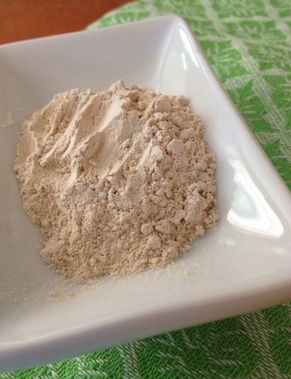 Maca has been used as a food and medicine staple in the Peruvian Andres for thousands of years but more recently has made a name for itself as an energizing superfood! This root from the potato family is commonly available in the U.S. in dried powder form at all health food stores and some regular grocery stores. Maca is nearly 10% protein and contains 20 amino acids; it's also packed with fiber, iron, and 21% of your daily allowance for vitamin E. Here are some other reasons to think about incorporating maca into your diet: 1. Boosts energy and endurance Do you feel tired often, even after you get a decent night's sleep? Most of us do these days because life is just super busy and seems to never slow down. Maca offers a non-caffeinated energy boost that gently stimulates the thyroid adrenal glands to give you a natural feeling of energy without a caffeine crash later in the day. 2. Helps relieve symptoms of PMS and menopause Maca works with the endocrine system to stimulate and nourish the hypothalamus and the pituitary glands which are the "master glands" that regulate thyroid, adrenal, pancreatic, ovarian, and testicular function. It is thought to work as an adaptogen assisting the body to either regulate hormone production upward or downward depending on the body's individual needs. Because of this, Maca has been known to relieve symptoms of PMS and menopause including pelvic pain, cramps, and hot flashes. There are several types of maca, but yellow maca has shown to have the best results in this category for women. 3. Increases libido Because maca helps to balance hormones naturally, many people also experience a nice boost in libido. It can help to promote sexual function in both men and women and has been described as an aphrodisiac by many. Black maca has shown to be particularly effective for men's fertility as it can help to increase sperm production and motility. 4. Helps to stabilize mood and combat depression Yet another benefit of a happily nourished and well functioning endocrine system is a stable mood. As maca helps to balance your hormones, you may also notice that it can help to stabilize your mood and decrease feelings of depression and anxiety. 5. Improves skin health Maca is packed with vitamin E which is a key nutrient for strong immunity and healthy skin and eyes. Getting the right amount of vitamin E can help to protect skin from damage and help to clear acne and blemishes. Maca powder has a slightly "malty" taste and I prefer it stirred into puddings or added to my morning smoothie. Try our Chocolate-Maca Chia Pudding or add it into your morning green smoothie. Maca can very stimulating for some, so start small with a small dose...try 1/2 teaspoon once daily with breakfast. A Few Things To Keep In Mind**: 1. Always consult with your physician before adding any new supplement.This includes maca. 2. Do not add maca to your diet if you have high blood pressure, liver issues, or a hormone dependent cancer like breast or prostate cancer or if you are pregnant or nursing. 3. Do not add maca to hot food, as it will lose it's benefits. 4. Start with a small amount of maca until you know how it will affect you. I recommend 1/2 teaspoon every other day, always in the first half of the day. You can work up to 2 teaspoons per day but most people find that 1/2 to 1 teaspoon a day or even every few days is plenty. 5. If you find maca to beneficial to you and begin to use it on a regular basis, I recommend taking 2 days off each week so that you don't get overstimulated or have any adverse affects. So take it Monday through Friday and then take Saturday and Sunday off. I've been using maca powder consistently now for about 4 weeks as part of my adrenal recovery treatment and I've personally experienced several of these benefits. ~Billie **As with adding any new supplement to your diet, you should always consult your physician and/or work directly with a licensed health care provider. Maca root is not recommended for kids, pregnant women, anyone with a hormone dependent cancer, or women in hormone replacement therapy unless otherwise directed by a treating physician. |
Billie Shellist, FDN-P
I practice functional nutrition, an approach that allows me to look at your entire health history and help you find the "root causes" of your chronic health complaints. This cuts out the trial and error process and helps you get real symptom relief and resolution! Food is medicine and knowledge is power -I hope you enjoy my anti-inflammatory recipes which are gluten, dairy, and soy free as well as very low grain and sugar. If you'd like to heal from the root cause(s) of your chronic symptoms, try starting with a complimentary 15-minute consultation. Click here to request your free session. |

